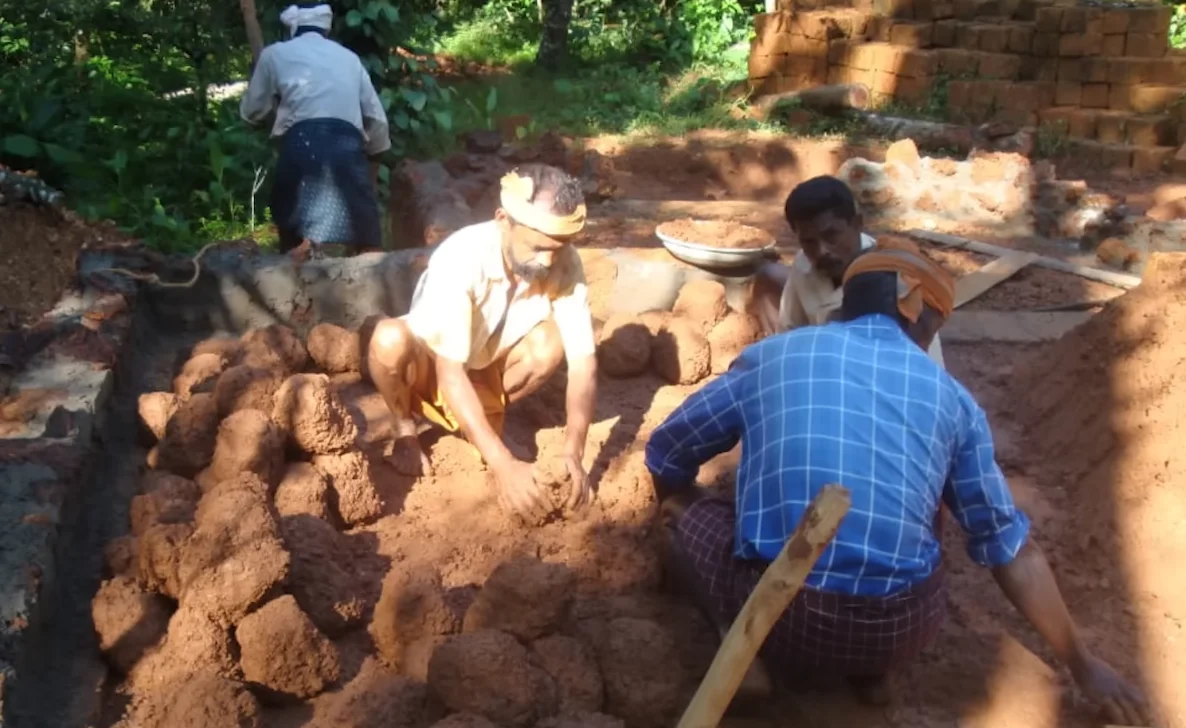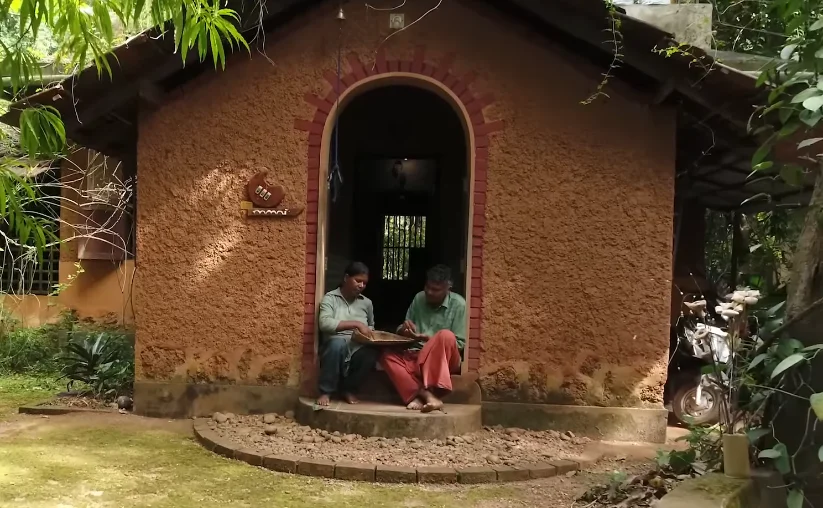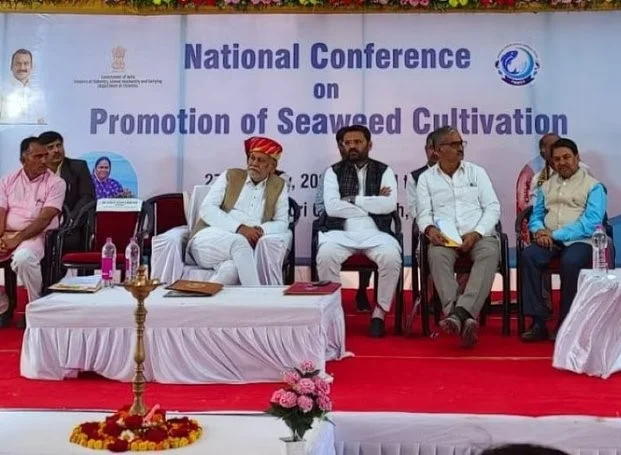In a world often driven by the hustle and bustle of city life, there are those like Hari and Asha who seek a different path—a path that embraces harmony with nature over the hectic pace of artificial urban living. Their story unfolds in Kannur, Kerala, where this couple has chosen to carve out their own oasis, contributing more to the planet than they take.
The journey of Hari and Asha is a testament to their dream of living authentically, far removed from the city’s monotony. Nestled within a 34-acre piece of land, they’ve cultivated their own haven—a food forest that stands as a testament to their commitment to sustainable living. What sets their lifestyle apart is not just the lush surroundings but the dwelling they’ve crafted for themselves—a modest abode constructed from Earth, powered by solar energy and biogas.

Hari and Asha’s sanctuary, aptly named Nanavu, is a micro paradise that reflects their dedication to living in harmony with nature. As they share their story, their journey becomes an inspiring narrative of choosing a simpler, eco-friendly lifestyle in the midst of a world that often races ahead.
Also Read: Corporate Business Head Quits Job to Teach Mud House Construction
Hari, with a passion for their unique lifestyle, shares, “We’ve been conducting an experiment for the past 25 years on living in harmony with nature. Our primary goal is to lead an energy-efficient lifestyle while respecting and preserving the environment. We firmly believe that the Earth is not just for humans; it’s a shared home for all living beings. Each species plays a crucial role, and no one can truly thrive without the other.”

Hari and Asha’s journey began in 2007 when they tied the knot. While Hari served in the local water authority in Kannur, Asha dedicated herself to a community fostering natural farming practices. What brought them together was a shared dream, a dream woven with Asha’s longing for a mud-made home nestled in the heart of a forest.
Asha fondly recalls, “Since my childhood, I’ve harbored the dream of crafting a forest and constructing a modest dwelling within it. Back in my college days, a professor instilled in me the idea that a house should seamlessly blend with nature, and mud houses emerged as the perfect embodiment of this philosophy. Starting in the 1980s, I began laying the groundwork to bring my mud house dream to life. Thanks to Hari’s support after our marriage, I was able to fulfill this cherished wish.”

In realizing their dream, the couple drew inspiration from the low-cost housing construction techniques pioneered by Laurie Baker.

Hari details the construction process, saying, “To create our mud house, we dug the mud from at least 2.5 feet below the topsoil, ensuring a sturdy foundation. By excavating 2-3 feet of soil from the house’s base, we obtained enough mud for the construction. The method we followed is quite straightforward: manually smashing the mud 5-6 times, we allowed it to ferment for 10 days to eliminate termite eggs. Adding one bucket of shell lime powder to the mashed mud, we let the mixture sit for an additional 10 days. Once the mud was prepared, we crafted mud balls and stacked them on top of one another. Stacking halted when the side wall reached a height of 75 cm to allow for drying. This process continued until the walls were fully constructed.”

The charm of mud walls lies in their remarkable qualities. With excellent thermal properties, these walls act as natural regulators. In scorching heat, mud walls keep the interiors cool, while in winter, they retain warmth, creating a comfortable living environment. Additionally, mud houses exhibit a unique feature—they breathe, absorbing excess moisture during humid days.
Hari attests to the practical benefits, stating, “We’ve called this mud house home for the past 9 years, and remarkably, we don’t use any fans or coolers. This minimal reliance on external sources has significantly reduced our energy consumption.”
In fact, the couple’s electricity usage is impressively low, not exceeding 4 units per month. To put this in perspective, it’s less than what a typical middle-class household in a city might use in a single day.
Reflecting on their initial investment, nine years ago, Hari reveals, “We spent Rs. 4 lakh to construct this house, with most of it going towards labor costs.”
Hari shares, “We gathered the mud right from our surroundings, and for the doors and windows, we opted for wood from old trees, mainly using coconut wood in the construction.”
In keeping with their commitment to natural materials, the couple adorned the house with locally crafted terracotta tiles on both the floor and roof. Adding a splash of color, they utilized a clay-based pigment called Ochre as paint.
Their dedication to eco-friendly living extends beyond the building materials. The couple goes a step further by generating their power sustainably, relying on a 1.5 KWh rooftop solar system and utilizing biogas to fulfill their energy needs.
Hari elaborates on their energy philosophy, “Traditionally, electricity generated through methods like hydel projects and nuclear plants can harm the environment. Producing electricity by damming rivers and through nuclear fission goes against the laws of nature. We believe it’s better to produce our own electricity, harvesting solar energy. This provides ample power to run all our electronic devices – laptops, television, camera, and even a mixing grinder. However, we are mindful of our consumption and regularly monitor it.”

The couple’s mindful approach to energy is evident in their home, where you won’t find a refrigerator. Instead, they employ a natural and ingenious method for preserving food—an earthen container seamlessly integrated into the kitchen floor.
Asha explains, “Our natural cooler serves as a practical alternative to a traditional refrigerator. It consists of clay bricks lining the cooler, filled with sand. At the center, a mud pot is placed, and regular sprinkling of sand helps cool it down. The temperature inside the mud pot remains around 10 degrees Celsius. This ingenious setup not only keeps food fresh without losing nutrition but also operates on the principle of maintaining moisture. Regularly watering the sand is crucial to ensure the container stays cool and functions effectively.”
At Nanavu, every bit of organic waste, including fecal waste, undergoes a sustainable transformation into biogas, a resource employed for cooking purposes.

Asha details their eco-conscious approach, stating, “Here at Nanavu, we have a biogas plant that efficiently converts organic waste, including human excreta from connected toilets, into usable energy for cooking. The slurry produced by the biogas plant serves a dual purpose as it can be utilized as a nutrient-rich soil fertilizer.”

Embracing the Gandhian principle of self-sufficiency, the couple extends their commitment to growing their own food. Their method involves cultivating a natural food forest, following a philosophy that draws inspiration from the forest’s self-sustaining model.
Asha elaborates on their farming approach, saying, “To understand farming, one should observe a forest. In a forest, plants grow without external interventions like watering or fertilizers. We emulate this natural process with minimal interference, utilizing negligible natural fertilizers such as small amounts of cow dung and biogas slurry. Our approach to farming aligns with the principles of zero-budget natural farming, creating a balanced and flavorful harvest with minimal impact on nature.”

Asha expresses, “Our home, nestled within an eco-friendly haven, surrounded by nature, provides us with a sense of bliss. It’s disheartening to see how people can lose their humanity in the pursuit of money and power. Many spend their entire lives chasing wealth, constructing grand houses, and acquiring expensive possessions. In the end, they often find themselves devoid of true happiness and inner peace. Health deteriorates, and significant sums are spent on treatments. In contrast, we savor each moment of our lives without squandering it. We find joy in simple pleasures like listening to a quail’s song, observing birds bathing, and butterflies fluttering around us. We consider ourselves blessed. Imagine if more people embraced this way of living—our Earth could transform into a paradise.”









